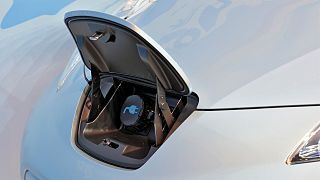From Guest Blogger KJ: Eco Friendly Car Options

Boosting Fuel Efficiency of Your Existing Car
Not everyone can afford to buy or lease a new car just for the basis of fuel economy. There are still a few things you can do. The most obvious is to increase the pressure in your tires from the 32 psi that’s standard. Overinflating your tires to about 40 to 45 psi can increase your car’s gas mileage by 2-4 miles per gallon, and more on larger vehicles.
Billionaire Elon Musk has garnered no small amount of fame for his rocket company, SpaceX, but it’s Tesla Motors which has started to turn a profit. Musk’s Model S sedan recently got the highest rating of any vehicle ever reviewed by Consumer Reports, and while it’s pricey – starting at $69,900, the cost per mile from a straight electric vehicle is roughly one third of the cost per mile from a gasoline engine. Musk is currently working to build a factory to produce lithium ion batteries to cut costs as part of the roll-out for the Model E in 2017, aiming to move downmarket.
Musk’s Model S isn’t the only pure electric vehicle on the market; the Nissan Leaf has sold more electric vehicles than any other commercial car model in the world – including the US – and has a considerably lower purchase price.
The drawback of a purely electric vehicle is driving range and recharging stations. Musk has recharging stations for the Model S throughout the East Coast, but most consumers also have to budget a recharging station into their home, and the cars can take a long time to recharge.
Diesels
Diesel engines have their appeal. They’re a mature technology, and there are diesel fuel pumps at most gas stations in the US. Diesel engines aren’t zero emissions like a straight electric engine is, but they can get impressive gas mileage – in the vicinity of 45 to 50 miles per gallon.
Gasoline-Electric Hybrids
There are two flavors of hybrid engine cars – those that have a parallel gasoline engine and electric motor assembly, like the Honda CRV and the Toyota Prius, and those that have a much smaller gasoline engine and use a purely electric drive train, like the Chevy Volt. The latter types of cars usually have a plug-in option.
Smaller Ultra Compact Cars
While slowly gaining traction in the US, where the love of the big automobile is ingrained by more than half a century of automobile marketing, smaller cars, like the Smart Car or the Tata Nano, are used by urban dwellers in Europe, and they’re starting to make their way to the US, though the side impact requirements make them heavier and cut deeply into fuel economy. Cars in this class are easier to park, but tend to be fair weather vehicles – their fuel economy comes from being lighter than competing vehicles. Some auto manufacturers in the US – Elio Motors, out of Louisiana – are looking at bringing this style of car to market at a very low price. These types of cars make good commuter vehicles, but may not be suited to long distance driving.
Bio
KJ’s Super Stores has been a family owned business in Idaho, Wyoming, Utah, and Nevada. See their Buck’s station in Idaho Falls.
